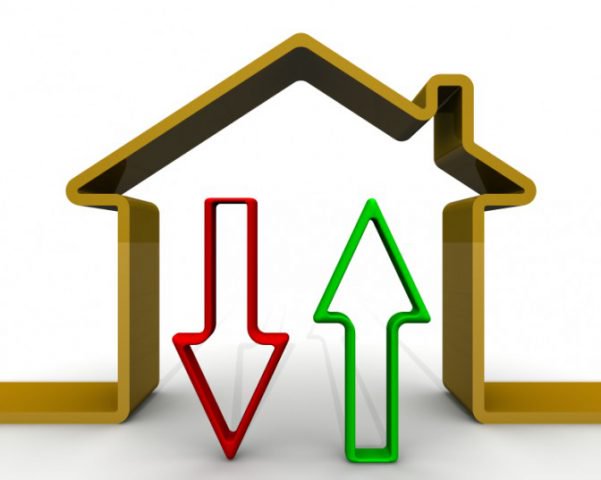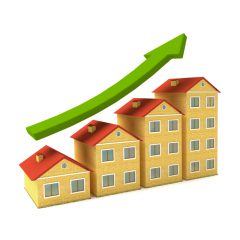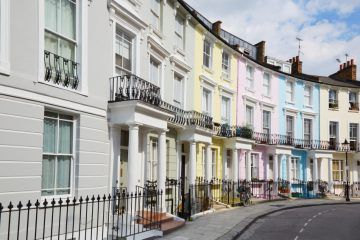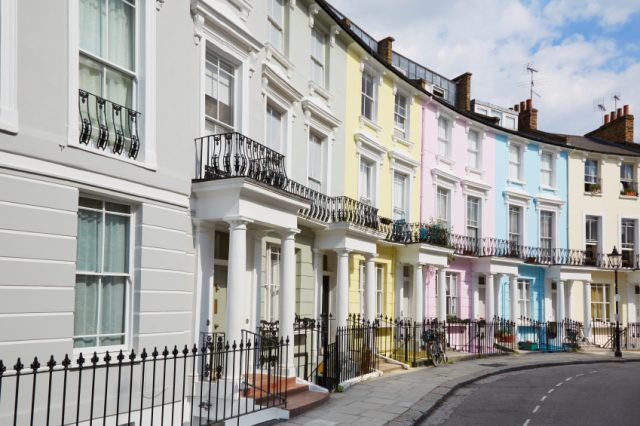Average house prices in the UK were still rising by 4.9% on an annual basis in June 2017, according to the latest official data from the Office for National Statistics (ONS) and Land Registry.
However, this is slightly down on the previous month’s average growth rate, of 5.0%. Although the annual growth rate has slowed since mid-2016, it has remained broadly around the 5% mark in 2017.
The average UK house price was £223,000 in June – £10,000 higher than in June last year and £2,000 higher than in May.
The main contributor to the increase in average UK house prices was England, where property values rose by an average of 5.2% over the year to June, to reach £240,000.
Wales saw house prices grow by an average of 3.6% over the 12 months to June, taking the average to £152,000.
In Scotland, the average property value was up by 2.9% over the year, to stand at £144,000.
The average house price in Northern Ireland was £129,000 in June, after rising by 4.4%.
On a regional basis, London continues to boast the highest average house price, at £482,000, followed by the South East and East of England, at £320,000 and £287,000 respectively. The lowest average prices continue to be found in the North East, at £130,000.
The East of England recorded the highest annual growth, with prices rising by an average of 7.2% in the year to June. The East Midlands followed, at 7.1%. The lowest annual growth was seen in the North East, where prices increased by 2.5% over the year, followed by London, at 2.9%.
By local authority, the Orkney Islands showed the largest annual growth, with average prices up by 27.9% to £148,000.
Low numbers of sales transactions in some local authorities and London boroughs, such as the Orkney Islands, City of London and Na h-Eileanan Siar, can lead to volatility in the series. While efforts are made to account for this volatility, the change in prices in these areas can be influenced by the type and number of properties sold in any given period.
The lowest annual growth rate was recorded in the City of London, where prices dropped by an average of 20.3% to sit at £724,000.
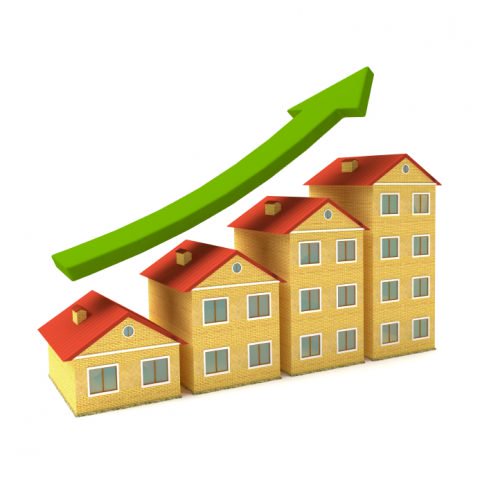
House Prices Still Increasing by 4.9% Annually, Shows Official Data
In June 2017, the most expensive borough to buy a property in was Kensington and Chelsea, where the average house price was £1.4m. In contrast, the cheapest place to purchase a property was Blaenau Gwent, where a typical home costs £80,000.
Comments
The Founder and CEO of online estate agent eMoov.co.uk, Russell Quirk, says: “It may seem a long time ago now, but many believe the market is still shaking off a degree of Brexit uncertainty – a stance that has been bolstered by the less than convincing political landscape that followed.
“Ironically, it has been those that prophesied the rapture of the UK market that have actually been the most detrimental to it. Those closest to the action, such as George Osborne and his outlandish claims of an inevitable 18% crash in house prices, have seen an air of uncertainty slow the market, albeit a tiny blip on an otherwise impeccable current medical record for UK property.
“A year on and, in contrast to gloomy predictions, an anticipative Schadenfreude even, we see that, in fact, house prices are nearly 5% higher annually, with the monthly decline in growth reversing and the market remaining one of the most robust in the world.
“The attempt by Osborne, Hammond and many others to talk the puff out of the UK economy and its related housing market were grossly exaggerated and in fact completely wrong.”
Shaun Church, the Director of mortgage broker Private Finance, also comments: “The property market remains above water, although prices are rising more slowly compared to recent years. The subdued market is partly due to a lack of new homes for sale and rising inflation squeezing household finances. However, fundamentals remain strong and there are few signs of the kind of drastic price correction some have predicted.
“That said, areas with a higher concentration of properties at the upper-end of the market, particularly parts of central London, have been hit hard by the changes to Stamp Duty and are experiencing sluggish or even negative price growth. Until the Government reconsiders its stance, the prime market will continue to struggle.
“Another significant factor in slower house price growth is the reduced demand from buy-to-let investors, who have been deterred by the recent raft of punitive tax measures. However, the fall in buy-to-let investment has been partially offset by the increasingly buoyant first time buyer market, as young professionals take advantage of the record low interest rates and softer price rises.”
The Director of Property at property stock exchange Property Partner, Rob Weaver, adds: “Against a backdrop of political and economic uncertainty, once again Britain’s housing market has demonstrated its resilience, with a monthly price rise of 0.8%.
‘’Despite a slight fall in prices in London, rises across every other English region acted as a cushion – painting a broadly positive picture for landlords, particularly those who diversify by owning property in different parts of the country.
“We favour a steady market, and we have been saying this for a long time now. Long-term, steady growth is far healthier than the significant increases of recent years.”
‘’At Property Partner, we are seeing many investors take a slightly longer-term view of the market, by focusing on properties that deliver a higher yield, rather than necessarily targeting high capital growth.
‘’Considering the housing market is in the middle of the usual summer slowdown, today’s figures are encouraging, and current and potential landlords should feel reassured.’’
Ishaan Malhi, the CEO and Founder of online mortgage broker Trussle, also reacts: “Homeowners worried about the prospect of slipping into negative equity will be happy to see a second consecutive month of house price growth. Hopeful first time buyers looking to get onto the property ladder will naturally be less enthusiastic. Despite interest rates remaining at rock bottom, younger buyers still face the gruelling prospect of having to raise a deposit of around £30,000, which is higher than the average UK salary.
“The surest way to boost homeownership among the younger generation is to build more homes, but aspiring homeowners could be waiting a while for that supply to arrive. In the meantime, the best bet is to make the most of Government schemes like Help to Buy and Starter Homes, while shared ownership could also help realise the homeownership dream for those struggling to find a way in.”
The CEO of buy-to-let specialist Landbay, John Goodall, continues: “Against expectations, inflation has held steady today, stealing the limelight from housing figures, which suggest that house price growth has now returned. Supply and demand remain severely out of kilter, meaning that housing affordability remains one of the most pressing issues facing UK society over the medium to long-term.
“The roots of the affordability crisis can be traced back to insufficient construction over the past decade, but a number of other macroeconomic factors are now also playing a part. Wage growth is struggling to keep pace with rocketing inflation, which is hitting people’s pockets and making it harder for aspiring homeowners to afford their first property, as well as discouraging existing homeowners from moving. This is pushing more and more people toward the private rental sector to house them while they save, so construction needs to focus not only on more affordable homes for first time buyers, but for the rental sector as well.”
We also have comment from Jonathan Hopper, the Managing Director of Garrington Property Finders: “After the previous month’s data showed a decline in London’s house prices, it’s concerning but not surprising to see a further – and more pronounced – fall in the capital’s prices in June.
“For years, London’s property market seemed to know no bounds, but, for two consecutive months, the capital has seen a deceleration in prices, forcing sellers to adjust their pricing in keeping with a new reality.
“There is a degree of inevitability about prices cooling, as house price inflation in the capital raced ahead of wage inflation for several years, but, ultimately, this situation was always going to be unsustainable.
“Across the country as a whole, house prices remained largely flat, although a few regions outside of London also experienced a slowdown in property price growth.
“Although the ongoing lack of supply has continued to prop up prices, in practice, there are many buyers closely watching these movements in the market and managing to secure weighty discounts.
“Sellers who are conscious of this, and are both pragmatic and flexible in their approach to pricing, are most likely to guarantee a sale in today’s market.”
Lucy Pendleton, the Founder Director of independent estate agents James Pendleton, also responds: “There’s the slightest hint of a two-speed housing market here, with the UK upping the pace of growth annually and monthly, while London touched the brakes.
“Perhaps it’s not surprising to see the London market, after such strong gains, buck the national trend and slow down a little more in a General Election month.
“However, the market is not lurching and there is still strong demand. The trailblaising East of England posting annual growth of more than 7% is an obvious sign of confidence outside the capital.
“There are headwinds, but it’s important to remember interest rates have not yet gone up, we still have the Help To Buy scheme and the more hazardous economic effects of Brexit have not begun to materialise.
“That’s why this isn’t yet a nerve-jangling tightrope walk between buyers and sellers attempting to face off against each other. Armies in both camps are dancing arm in arm and seem content with where the market is right now.”

